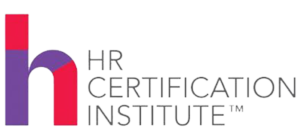Developing Great Leaders: The Human Workplace Perspective
We are a certified Continuing Education provider for



Developing Great Leaders: The Human Workplace Perspective
Set The Bar
A leader that doesn’t abide by his own rules is one who won’t be respected by those under him. The workplace today is different than ever before. It has exceptional levels of effectiveness, but layers of bureaucracy and self-interest combine to percolate internal friction. This impedes profitable operation and is to be avoided as possible.
Leadership is key in facilitating streamlined internal operation. However, leaders are made, not born. Well, in truth, there’s a combination of strength, intellect, and charisma which defines the best leaders. Some are thrust into situations where these skills must be immediately learned.
Others find themselves higher up than they should be without having mastered these skills. Following, we’ll examine some of the things that make a good leader in today’s fast-paced professional world. Wherever you’re coming from, there is always room to make yourself better. The key to all the following considerations is the right attitude.
Build Strong Relationships
Good leaders build strong relationships. Strong relationships take work, attention, and time. They additionally take attention beyond what is simply occupational. If you want to be in good shape, you’ve got to eat right and exercise. If you want to be a good leader, you need to build relationships and be passionate about keeping them. You need to truly be interested in people.
Would you yourself follow some faceless power figure who views you as less than human? As beneath him? Or would you follow someone who would sacrifice their own personal comfort on your behalf? Know the names of your employees. Know what’s important to them. Know their strengths and weaknesses. Work with them.
Leadership does require a level of give and take. If you want people to willingly follow you, sometimes you need to let them prove to themselves that you’re more appropriate to the task of leadership than they are. Tell them what to do, and if they don’t do it, let the fallout of this decision take place, then calmly demonstrate this is why you don’t do things that way.
Certainly sometimes this approach isn’t an option, but it’s noted here to help give the reader an idea of the attitude to take. When employees see that your leadership isn’t just de facto, but necessary, they’re more likely to respect it, and you’re more likely to have a real relationship with them. The reason for their respect of your leadership will have been personally experienced.
Give Employees the Right Tools to Succeed
It’s essential to give workers the right tools to succeed. The same is true with managers. Technology that helps you to source the right people must be used. The truth is, you can’t do anything to determine another person’s attitude. They have to determine this themselves. However, you can increase your likelihood of finding people with the right attitudes.
Technology exists today which can help you decentralize operational management such that remote employees can handle appropriate tasks, optimizing on-site employee effectiveness and providing less “static” between team leads. BYOD, or Bring Your Own Device, open the whole world up to you in terms of those who can be hired.
Learn To Improve Yourself
Are you some superhuman with the ability to eschew all error? Or are you a human being with an objective and responsibilities? The vast majority of humanity is the latter, and that means mistakes will be made. For a child to learn to walk, they must fall down multiple times. To learn to run, they’ve got to fall again—but for different reasons.
Yet once running is learned, skating, skiing, snowboarding, swimming, and other more complex disciplines can be mastered. All will have elements of failure before a plateau of skill is reached. This reality is no different when it comes to leadership. If you want to be a good leader, you must understand that you will make mistakes.
When that happens, be as transparent as professionally feasible—sometimes disclosure will be a bad idea, but most of the time it’s going to be your best move. Acknowledge your foibles, learn from your mistakes, and seek to improve. Do this where all employees can see, so they’ll follow your example and do the same.
Be The Kind Of Leader You Would Follow
Recognize your own humanity, and use the tools available. Build relationships with your potential employees from the first second. More and more people these days streamline their recruiting process by using applicant tracking tools to cut down on the time spent on recruiting and get to the right applicants faster. This will leave you more time to focus on your leadership skills, business ideas, and decisions and making your workplace more desirable to work in.
Book An Appointment
Schedule a Free Consultation to Turn your Hiring Process into a Top Talent Generating Machine
Talk With Us Now
Identify Top Candidates ASAP
(833) 332-8378
